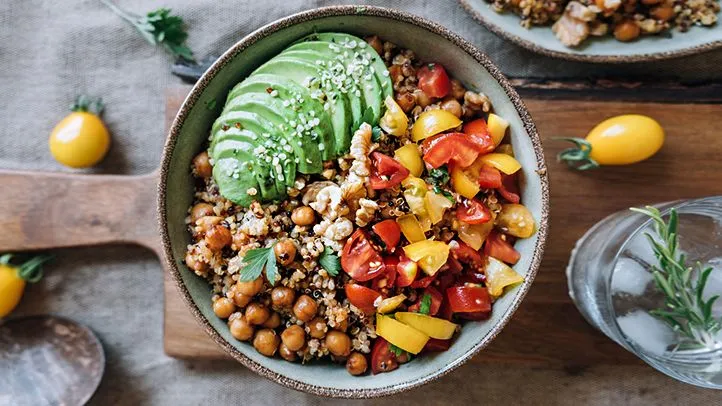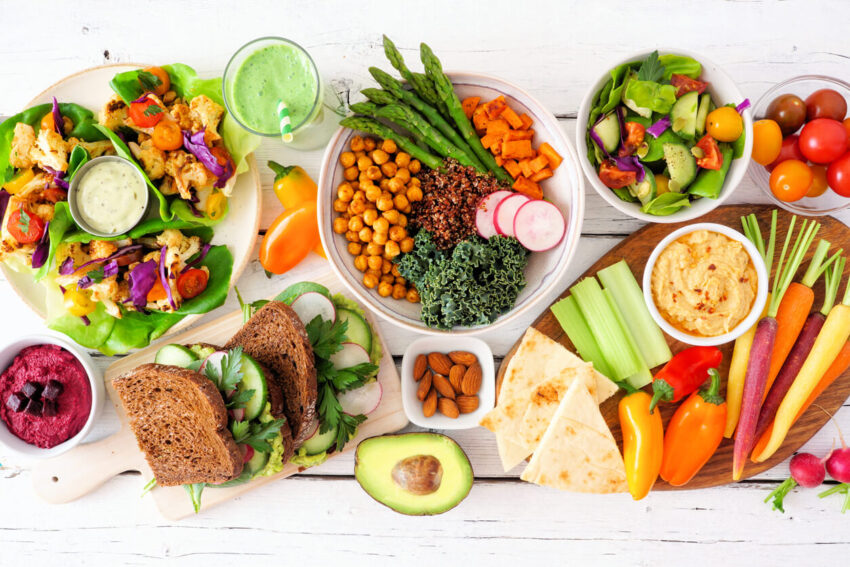Trying a plant-based meal for the first time can feel exciting yet slightly confusing. You may wonder what to cook, how to get enough nutrition, or whether it will taste as good as your regular meals. The truth is, eating plant-based is easier than it looks—especially for Indians, since many of our traditional dishes are already vegetarian or close to it. With just a few mindful choices, you can make your first plant-based meal both healthy and delicious.
This article will guide you through everything you need to know—what “plant-based” really means, how to plan your first meal, which ingredients to keep in your kitchen, and how to make balanced, flavorful dishes using simple Indian ingredients.
What Does “Plant-Based” Really Mean?
A plant-based diet focuses on foods that come from plants—vegetables, fruits, grains, pulses, nuts, and seeds. It doesn’t mean you have to be completely vegan or never eat dairy again. It simply encourages you to make plants the center of your plate.
In Indian homes, many everyday meals—like dal, rice, roti, and sabzi—are already plant-based. The idea is to eat more whole, unprocessed plant foods and rely less on animal-based or heavily processed products.
Why Try a Plant-Based Meal?
There are plenty of good reasons to start eating more plant-based foods. They’re good for your health, your wallet, and the environment. Plant-based meals are naturally rich in fiber, antioxidants, and essential nutrients. They help with digestion, heart health, and weight management.
From an environmental point of view, plants require less water and energy to grow compared to meat or dairy. By eating more plant-based foods, you also reduce your carbon footprint and support a more sustainable lifestyle. Plus, plant-based meals can be budget-friendly since ingredients like pulses, rice, and local vegetables are easily available and affordable across India.
How to Plan Your First Plant-Based Meal

Your first plant-based meal doesn’t need to be fancy. The best approach is to build a simple, balanced plate using Indian staples. Aim to include one main dish (protein), one grain (carbohydrate), one side dish (vegetables), and a fresh salad.
Here’s an example:
- Main: Chana Masala (Spiced Chickpea Curry)
- Grain: Steamed Rice or 2 Whole Wheat Rotis
- Side: Mixed Vegetable Sabzi or Stir-Fried Seasonal Veggies
- Salad: Kachumber (Onion, Tomato, and Cucumber) with Lemon and Salt
This combination gives you a healthy mix of protein, fiber, healthy carbs, and micronutrients, all while keeping your meal light and flavorful.
Also Read How to Read Nutrition Labels: A Simple Guide for Healthy Eating in India
Must-Have Ingredients for a Plant-Based Indian Pantry
If you cook at home, you probably already have most of what you need for plant-based cooking. Here are a few essentials to keep stocked:
Staples:
Rice, atta (whole wheat flour), millets like jowar or bajra, pulses such as chana, moong, masoor, and rajma.
Vegetables & Fruits:
Onions, tomatoes, garlic, ginger, potatoes, leafy greens, carrots, beans, and seasonal fruits.
Spices:
Turmeric, coriander, cumin, red chili powder, garam masala, mustard seeds, curry leaves, and hing (asafoetida).
Extras:
Fresh herbs like coriander and mint, lemon, tamarind, coconut, peanuts, and a variety of oils like mustard, sunflower, or groundnut oil.
Step-by-Step Recipe: Your First Plant-Based Indian Meal
Let’s look at an easy, nutritious recipe to get you started.
Chana Masala (Chickpea Curry)
Ingredients:
- 1 cup dried chickpeas or 1 can boiled chickpeas
- 2 medium onions (finely chopped)
- 2 tomatoes (pureed or chopped)
- 1 inch ginger, 2 garlic cloves (optional)
- 1 tsp cumin seeds, 1 tsp turmeric, 1 tsp garam masala
- 1–2 tsp red chili powder, salt to taste
- 2 tbsp oil, coriander leaves for garnish
Method:
- Soak chickpeas overnight or use canned ones.
- Heat oil in a pan and add cumin seeds. Let them crackle.
- Add onions and cook until golden brown.
- Add ginger, garlic, and tomatoes. Cook till soft and oil separates.
- Add all spices and stir for a minute.
- Add chickpeas and about one cup of water. Simmer for 10 minutes.
- Garnish with coriander and serve hot with rice or rotis.
Quick Mixed Vegetable Sabzi
Ingredients:
2 cups chopped seasonal vegetables (carrots, beans, peas, capsicum),
1 tsp mustard seeds, 1/2 tsp turmeric, 1 tsp coriander powder, salt, and lemon.
Method:
- Heat oil in a pan and add mustard seeds.
- Add vegetables and cook with a little water on a low flame.
- Add turmeric, coriander, and salt. Stir well.
- Once soft, add lemon juice and serve.
This sabzi adds color, nutrients, and freshness to your meal.
Tips to Make Plant-Based Meals Delicious
- Use fresh, aromatic spices.
- Add lemon juice or amchur for tanginess.
- Use healthy oils in small amounts.
- Include textures — creamy dal, crunchy salad, soft rice.
- Garnish with herbs for a burst of freshness.
These simple tricks make your meal not just healthy but full of flavor and satisfaction.
Nutrition Benefits of Plant-Based Meals
A plant-based plate gives your body almost everything it needs.
- Protein: Pulses, legumes, soy, and lentils are rich in plant protein.
- Carbohydrates: Rice, rotis, and millets provide energy.
- Fats: Nuts, seeds, and oils supply healthy fats.
- Vitamins & Minerals: Vegetables and fruits give you vitamins A, C, and E, plus iron, magnesium, and potassium.
- Fiber: Keeps digestion smooth and supports gut health.
If you follow a full plant-based diet long term, make sure to include fortified foods or supplements for vitamin B12 and D, which are not naturally found in plants.
Budget-Friendly Plant-Based Tips for Indian Homes
- Buy pulses and grains in bulk to save money.
- Use seasonal and local produce — it’s cheaper and fresher.
- Visit local mandis instead of supermarkets for better deals.
- Grow herbs like mint, tulsi, or coriander at home.
- Reuse leftovers creatively — make wraps, sandwiches, or salads.
Eating plant-based doesn’t have to be expensive. It’s about planning smart and reducing food waste.
Common Mistakes Beginners Make
- Making meals too spicy or oily. Keep it balanced.
- Forgetting protein sources like dal or chickpeas.
- Using too many packaged “vegan” substitutes instead of natural foods.
- Expecting perfection from day one. Small steps matter more than drastic changes.
Remember, plant-based eating is a journey, not a rulebook.
FAQs
Q1: Can I get enough protein from plant-based meals?
Yes. Pulses, soy, lentils, tofu, nuts, and seeds offer good protein. Combine them with grains like rice or wheat for better nutrition.
Q2: How can I replace milk or curd in recipes?
Use soy, almond, or coconut milk. For curd, try soy or peanut-based yogurt. For creaminess, blend soaked cashews.
Q3: Do I need to take supplements?
If you completely avoid animal products, take vitamin B12 and D supplements after consulting your doctor.
Q4: Can I follow this diet if I live with a non-vegetarian family?
Absolutely. You can start with one plant-based meal a day and slowly increase.
Q5: Are Indian dishes suitable for plant-based diets?
Yes. Most traditional dishes like dal, rajma, khichdi, and vegetable curries are naturally plant-based or easy to adapt.
Final Thoughts
Making your first plant-based meal at home is not about perfection—it’s about intention. Start with simple, familiar dishes using local ingredients and Indian spices. Over time, you’ll discover new flavors and cooking techniques that make healthy eating fun.
Plant-based living isn’t just a food choice; it’s a step towards better health, a lighter footprint on the planet, and a more mindful way of eating. So, tie your apron, soak those chickpeas, and let your kitchen be the start of something nourishing and new.
